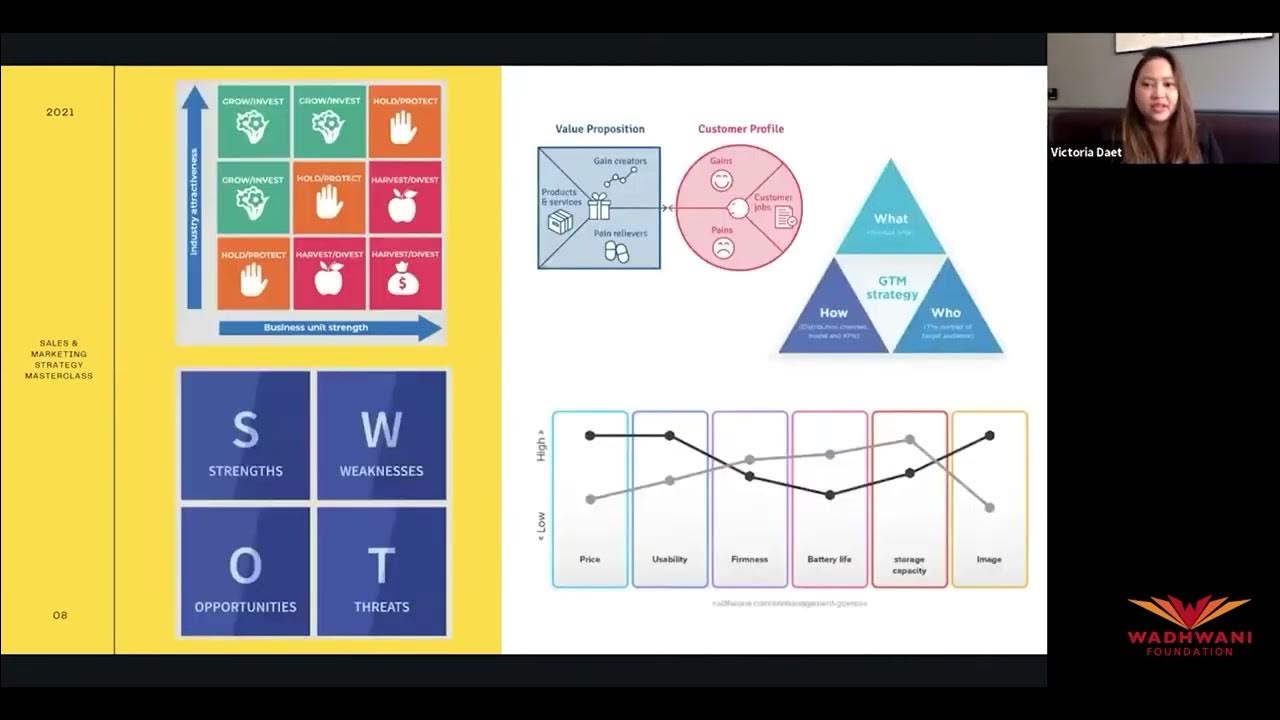How To Perfectly Pitch Your Seed Stage Startup With Y Combinator's Michael Seibel
Summary
TLDRThis video provides fundraising pitch advice for early-stage startups. It emphasizes being concise, easy to understand, and ordering key points from most to least impressive. Mistakes to avoid include using jargon, inaccurate details, vague examples, and distracting slides. Effective pitches clearly explain what the company does, have an impressive team, communicate quick progress, quantify market size, and directly ask investors for money. The goal is to spark conversation through clear communication, not dazzle investors with flair. By applying these tips, founders can craft a compelling pitch to successfully raise funds.
Takeaways
- 😀 Be concise and easy to understand when explaining what your company does
- 👥 Introduce your team clearly with roles and impressive accomplishments
- 🔥 Show momentum and progress, not vanity metrics on your traction slide
- 💡 Share non-obvious insights you've learned, with examples and data
- 💰 Teach investors your market size math, comparables matter
- 💸 Explicitly state the amount you are trying to raise
- 📈 Structure your pitch to highlight strengths early and get investors engaged
- 👐 Draw investors into a conversation instead of one-way presenting
- 🙂 Pay attention to investor facial reactions and interest levels
- ⛔️ Avoid distracting design and sizzle in your slides
Q & A
What are the key elements that should be covered in a startup pitch?
-The key elements that should be covered in a startup pitch are: what you do, who is on your team, what traction you have, your unique insights, your market size, and what you are asking for in terms of investment.
Why is it important to be concise when explaining what your startup does?
-Being concise when explaining what your startup does helps investors quickly understand your business. Using simple, clear language also helps you stand out from other founders who rely too much on fancy jargon.
What are some common mistakes founders make when pitching their team?
-Common mistakes founders make when pitching their team include not having clear roles and titles, not identifying the CEO, not being specific about team accomplishments, and telling long personal stories instead of focusing on credentials.
How can you show traction even if you don't have many users or revenue yet?
-You can show traction by communicating what you have accomplished since starting your company and why it is impressive, for example building an app and getting it in the hands of 100 test users within a month.
Why is it important to explain how you calculate your market size?
-Explaining the math behind your market size calculation teaches investors about your business and helps establish you as an expert. It also shows key assumptions like number of users and pricing.
What % of pitches fail to actually ask for investment?
-A surprisingly high percentage of pitches, around 70%, fail to actually ask for investment. You have to directly ask or risk leaving money on the table from investors who would say yes to avoid an uncomfortable 'no'.
How can you turn a pitch into more of a conversation?
-You can turn a pitch into more of a conversation by drawing investors into topics they show interest in and getting them to contribute ideas. The more they talk, the more they convince themselves to invest.
Why should pitch decks have boring slides?
-Boring slides help investors focus on you instead of getting distracted by fancy designs. Boring also signals being concise versus just trying to create sizzle.
What makes the YC program unique for startup founders?
-Key unique advantages of YC are not needing introductions to apply, participating in an encouraging founder peer group, and running a fundraising auction versus typical pitching.
What lessons can be applied from the example YC pitch?
-The example YC pitch demonstrates how effective it is to be clear, concise, and specific without much sizzle. It uses simple language, relatable examples, and emphasizes unique insights.
Outlines

Cette section est réservée aux utilisateurs payants. Améliorez votre compte pour accéder à cette section.
Améliorer maintenantMindmap

Cette section est réservée aux utilisateurs payants. Améliorez votre compte pour accéder à cette section.
Améliorer maintenantKeywords

Cette section est réservée aux utilisateurs payants. Améliorez votre compte pour accéder à cette section.
Améliorer maintenantHighlights

Cette section est réservée aux utilisateurs payants. Améliorez votre compte pour accéder à cette section.
Améliorer maintenantTranscripts

Cette section est réservée aux utilisateurs payants. Améliorez votre compte pour accéder à cette section.
Améliorer maintenantVoir Plus de Vidéos Connexes

"Unlocking Business Success: Keith Newman & Brian Smith Share Key Strategies

The Fundraising Process : Preparation phase - Startup valuation

Startup Story Telling & Fund Raising

How I changed my startups pitch deck to raise $2.3 MILLION

How Google Cloud and Accelerators partner on scaling startups

Week 10 Masterclass- Victoria Daet: Strategic Growth Blueprint
5.0 / 5 (0 votes)
